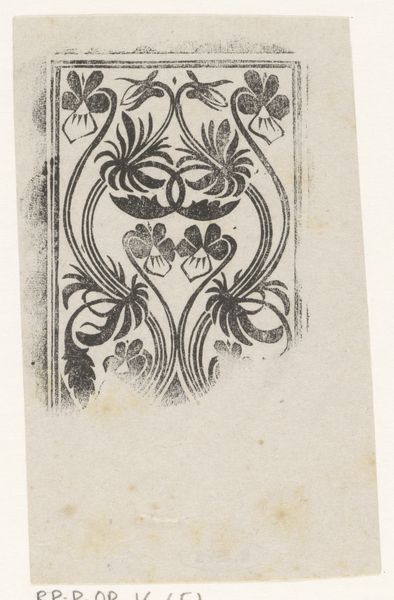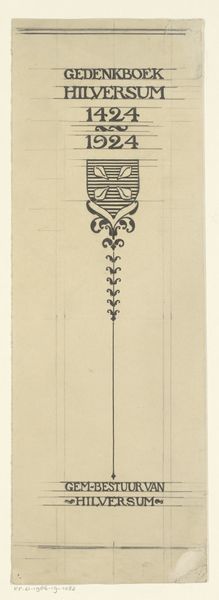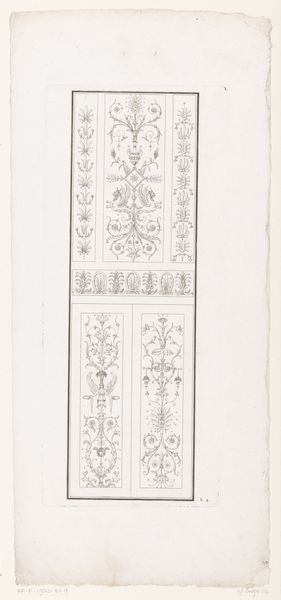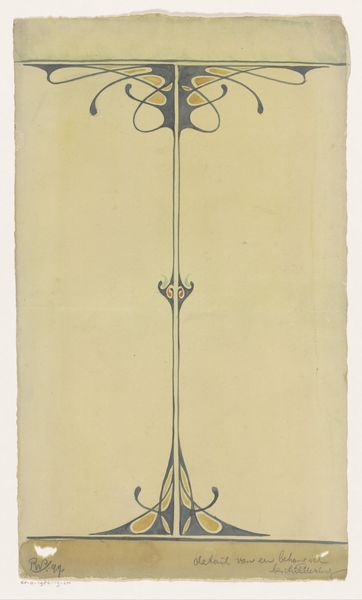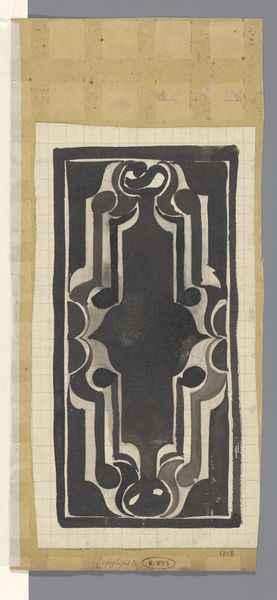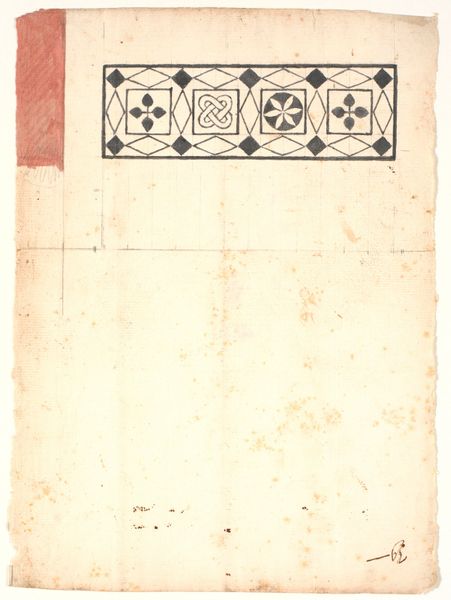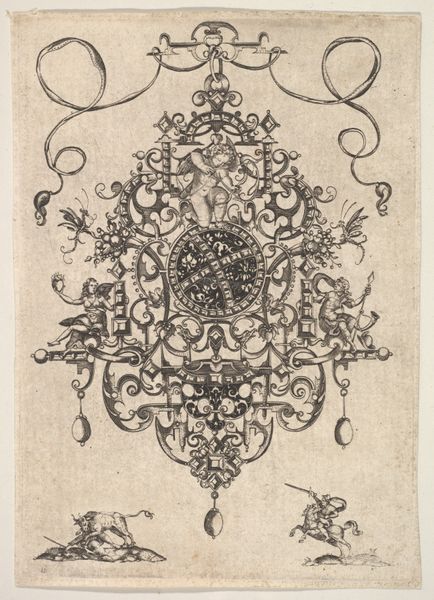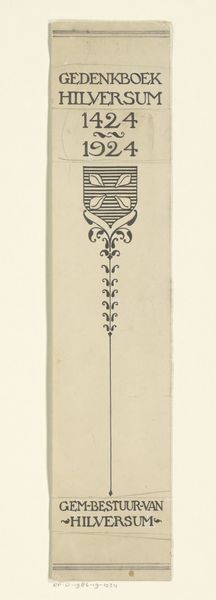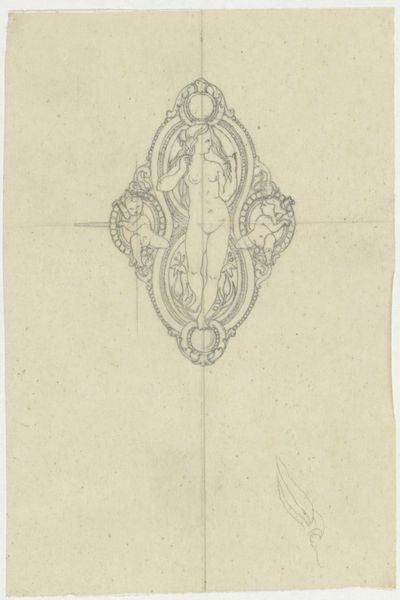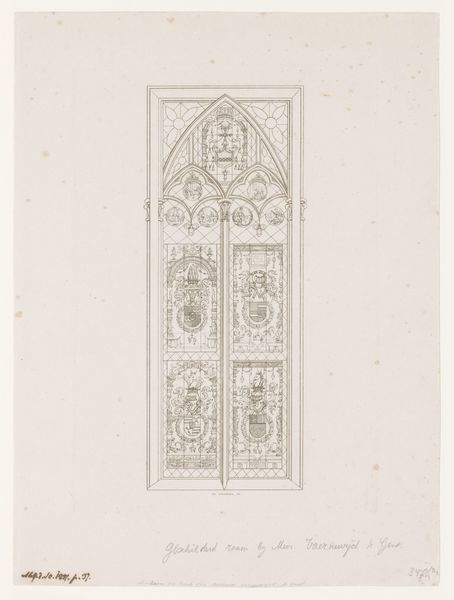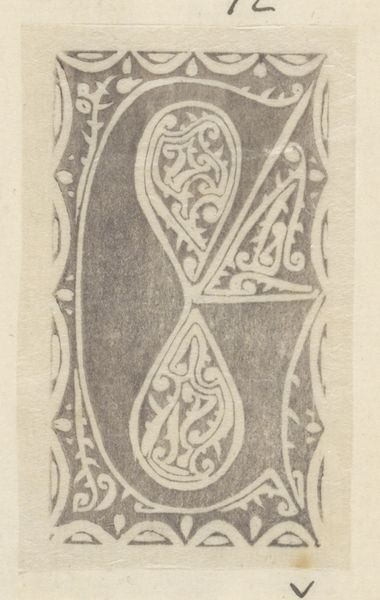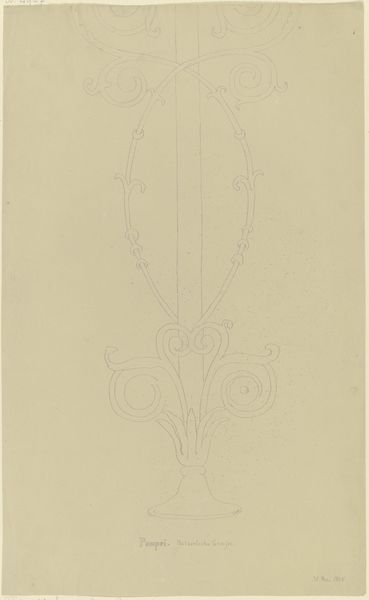
drawing, ornament, paper, ink
#
drawing
#
ornament
#
art-nouveau
#
ink paper printed
#
paper
#
form
#
ink
#
geometric
#
pen-ink sketch
#
line
Dimensions: height 98 mm, width 66 mm
Copyright: Rijks Museum: Open Domain
Curator: So here we have “Ornament,” a drawing from around 1910 by Bernard Willem Wierink, currently held at the Rijksmuseum. It's an ink drawing on paper. What are your first thoughts? Editor: Striking in its simplicity. The stark ink on paper makes me think about its accessibility, maybe even reproducibility for use in everyday design. It's quite elegant despite its humble form. Curator: Precisely. The beauty of Art Nouveau, isn’t it? To democratize beauty. Wierink’s choice of line and form elevates the mundane. It has this curious balance; a geometric core softened by those organic, almost floral embellishments. What kind of ornamentation do you think this could be used for? Editor: Considering the materials – ink, paper – and the date, I wonder if this was part of a larger set of designs destined for wallpaper or textiles? Or perhaps something more bespoke, like stencils for a smaller, craft-based production. This was a period when the machine-made aesthetic hadn't fully triumphed. There was still room for handcrafted beauty at every level. Curator: You can almost picture it repeated, can’t you? But thinking about the act of making it, the hand of the artist present in each inky line, it feels so individual. The ornament acts as a portal… into what? Maybe an ideal world Wierink was dreaming of, full of subtle order. The composition’s spare quality allows your eye to really savor the forms, as well. It makes me think of sacred geometry. Editor: I think there is an argument to be made for thinking of how craft during this time becomes intrinsically linked to notions of taste and class. Wierink's design is elegant, but it's also designed, and probably made, for production that would render it accessible across social stratifications. I do wonder who acquired this work. Curator: True. There's this tension in Art Nouveau, a yearning for the artisanal coupled with an embrace of new means of production. This object, a humble drawing, becomes a fascinating emblem of that struggle, an ornament with the potential to re-ornament the world. I love how much it gets one thinking about materiality. Editor: Exactly. It shows you how much of an artist’s soul goes into it and still finds a way into its mass production and, eventually, our own life and experiences. It truly has that spirit.
Comments
No comments
Be the first to comment and join the conversation on the ultimate creative platform.
